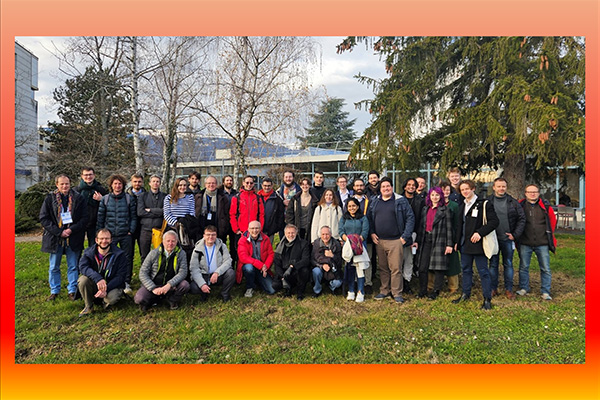Review of the AEgIS Collaboration Meeting

The AEgIS collaboration meeting, held at CERN from December 16 to 19, 2024, provided a comprehensive review of the project's current status and future plans. The meeting covered critical topics such as the status of key systems, recent experimental results, and strategic planning for the upcoming years.
The meeting opened with a welcome address by spokesperson Ruggero Caravita and a physics run overview by Physics Coordinator Benjamin Rienacker. They highlighted the significant progress made despite the interim upgrade during August and September, putting a lot of additional pressure on the team. This upgrade opened the experimental downstream side, enabling antihydrogen atoms to move from the production area toward the moiré deflectometer for future gravity measurements.
Updates on the control system, lasers, and positron system were presented, along with a session on positronium (Ps) in AEgIS. The latter provided critical insights into the challenges posed by low efficiency in recent years.
The next day began with discussions on the ballistic production of antihydrogen and the development of a new positronium target, expected to overcome current limitations and produce a high-intensity, forward-directed antihydrogen beam. Presentations on high-charge ion (HCI) formation from antiproton interactions and the Torun ion source status showcased innovations in experimental techniques. Afternoon sessions included initial test results of a portable antiproton trap and the unveiling of the groundbreaking OPHANIM detector, developed by Francesco Guatieri and Michael Berghold from AEgIS’s newest partner institution, the Technical University of Munich, led by Prof. Christoph Hugenschmidt.
The following day focused on improving antiproton catching and accumulation, with promising initial results from the Jagellonian University’s JPET modules for positronium and antihydrogen physics. Presentations on moiré deflectometer mechanics and scintillators highlighted readiness for upcoming installations. Strategic discussions revolved around the upcoming SPSC review and AEgIS’s long-term role in the European Strategy Group.
During the Collaboration Board meeting, Malgorzata Grosbart was elected as the new technical coordinator of AEgIS, while Ruggero Caravita was re-elected as Spokesperson. A new emeriti status was introduced, with Stefan Haider, former technical coordinator, and Michael Doser, former spokesperson and AEgIS founder, becoming the first to hold this honor as they transition into retirement or post-CERN careers. The day concluded with a traditional cheese fondue dinner in Geneva, fostering team spirit and informal exchanges.
The final day focused on winter shutdown activities and the physics potential of the positronium test chamber and the cryostat for novel cryogenic measurements which will be installed soon. Discussions on the acquisition of a new laser system explored various options to enhance experimental performance. The meeting concluded with a vote to adopt Mattermost as the collaboration’s new communication platform, reflecting a forward-thinking approach to team management.
The AEgIS collaboration meeting was a highly productive event, providing a platform for sharing progress and charting future directions. The decisions and insights gained during these sessions will guide the next phase of the project. With ongoing advancements in experimental techniques and infrastructure, AEgIS is well-prepared to make groundbreaking contributions to antimatter research in the coming years.
Further details of all the sessions in this meeting can be found on the Indico page here